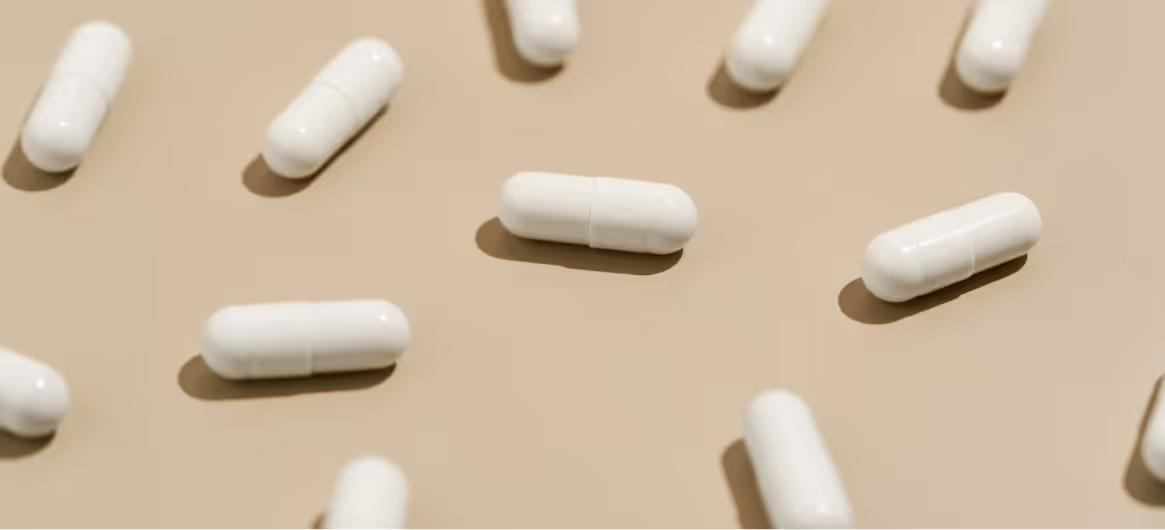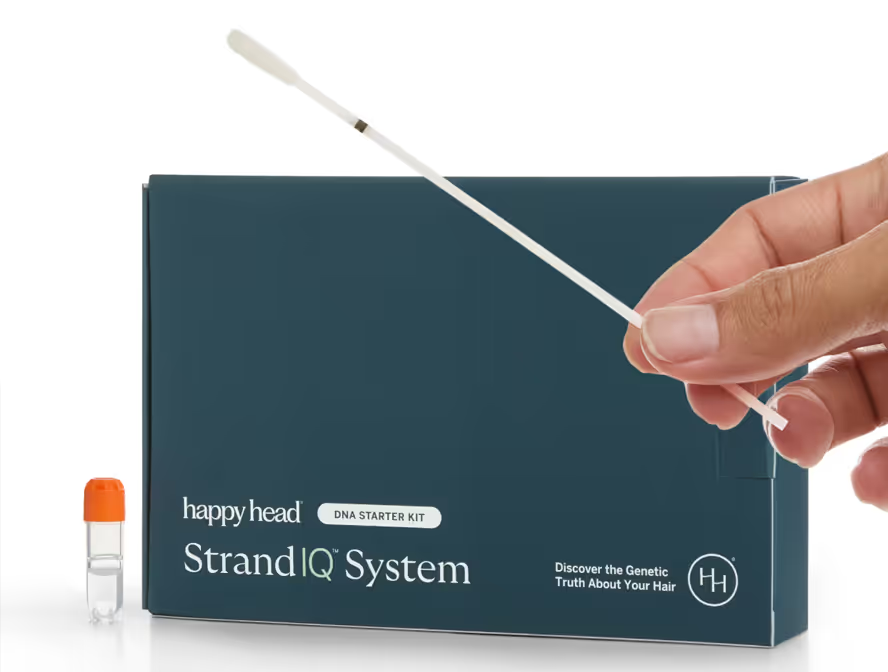If your genetics influence inflammation pathways or prostaglandin metabolism, you may respond differently to topical cetirizine. People with higher PGD₂ activity or histamine sensitivity might see more significant benefits, while those with lower inflammation may experience subtler results.
The Genetics of Cetirizine Effectiveness
Although direct genetic markers for cetirizine response aren’t yet established, there are variations in genes that may indicate whether cetirizine will be effective for you, including:
- Histamine signaling (H₁ receptor function)
- Inflammatory mediators (COX2, PGD₂ synthase)
- Antioxidant pathways
These variations can influence both inflammation levels in the scalp and follicle sensitivity to growth-inhibiting compounds. If you’re more prone to inflammation, you might see bigger benefits from adding cetirizine to your routine.
Likelihood Levels and Recommendations
Low Likelihood of Effectiveness
If your Happy Head StrandIQ™ analysis suggests lower histamine-driven inflammation or PGD₂ activity, cetirizine may offer only mild improvements when used alone. Instead, consider the following:
- Focus on core growth stimulants
Prioritize proven hair regrowth treatments like minoxidil or microneedling. - Use cetirizine as supportive care
Cetirizine can still help maintain a healthy scalp environment, setting the stage for optimal growth. - Explore antioxidant support
Nutrients like vitamins C and E can help replicate some of cetirizine’s inflammation-control effects.
Moderate Likelihood of Effectiveness
If your genetics suggest moderate levels of inflammation or PGD₂ signaling, cetirizine could help reduce shedding and promote regrowth, especially when used in combination with other treatments.
- Combine with growth stimulants
Consider using topical cetirizine alongside minoxidil, low-level laser therapy, or platelet-rich plasma (PRP) treatments. - Support scalp barrier health
Maintain hydration with gentle cleansers and nourishing oils to complement cetirizine’s anti-inflammatory effects. - Monitor results over 3–6 months
Document changes in density and shedding and work with your dermatologist to fine-tune your approach.
High Likelihood of Effectiveness
If your StrandIQ™ analysis suggests higher histamine or PGD₂ activity—which cetirizine directly addresses—you may experience stronger regrowth and reduced shedding with consistent use.
- Use daily for maximum impact
Apply topical cetirizine consistently, focusing on thinning areas to help restore follicle activity. - Combine with other solutions
Combine with DHT blockers, circulation boosters, and scalp microneedling for comprehensive support. - Consider professional-grade formulas
Explore compounded products, like those offered by Happy Head, to maximize healthy hair regrowth.
Path Forward
Cetirizine is generally safe, helps reduce inflammation, and has early research showing it may help with inflammation-related hair loss—especially if your genes point to high PGD₂ activity. It’s not a cure on its own, but it can be a useful part of a bigger hair growth plan—especially when paired with a personalized Happy Head treatment.
Resources
StrandIQ SNP Marker Count: 2
StrandIQ Genes for Trait:
PTGDR2
References:
Chen, X., et al. (2022). Topical cetirizine for treating androgenetic alopecia: A systematic review. Journal of Cosmetic Dermatology, 21(11), 5519–5526. PMID: 35976065.
Gohary, Y.M., et al. (2025). The efficacy of topical cetirizine using microneedling in androgenetic alopecia male patients. Archives of Dermatological Research, 317(1), 665. PMID: 40167621.
Jiang, S., et al. (2023). The efficacy of topical prostaglandin analogs for hair loss: A systematic review and meta-analysis. Frontiers in Medicine (Lausanne), 10, 1130623. PMID: 36999072.
This content, including StrandIQ™ DNA analysis reports and any Happy Head products and/or services referenced therein, is for informational and cosmetic purposes only. It is not intended to diagnose, treat, cure, or prevent any disease. This content does not constitute medical advice and should not be used to make healthcare decisions. References to prescription treatments are educational in nature. Always consult a licensed healthcare professional for any medical concerns or treatment decisions.








.avif)

